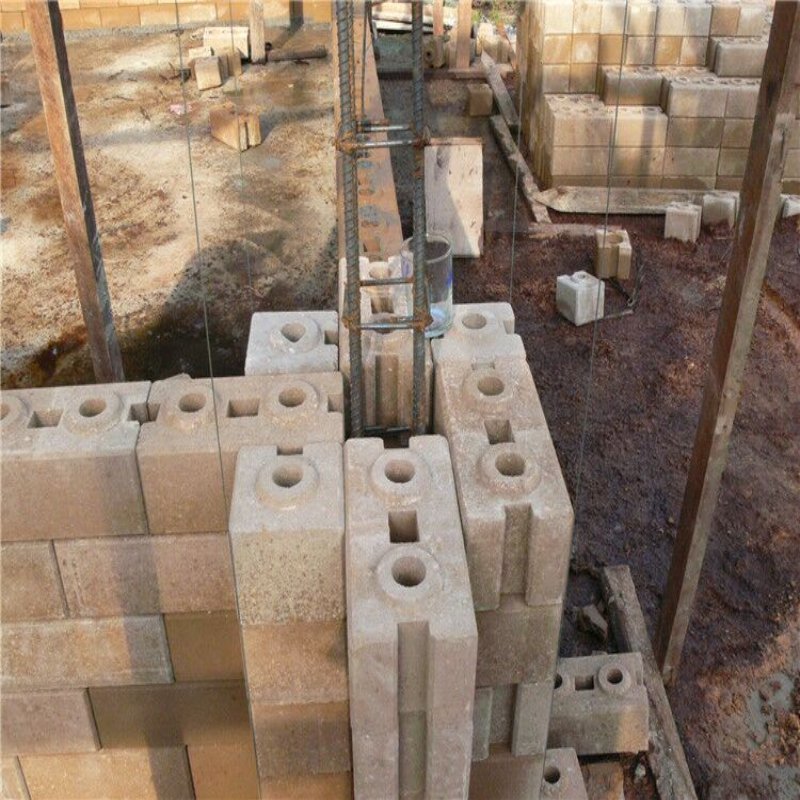
Image source:Aiwei block machine
Introduction
Chinese brick making machines have revolutionized the construction industry with their efficiency, versatility, and cost-effectiveness. While traditionally used for producing bricks, these machines are now finding new and exciting applications beyond conventional brick production. This article explores the emerging applications of Chinese brick making machines, highlighting their potential in various construction sectors and the positive impact they have on the industry.
Interlocking Bricks for Sustainable Construction
One of the emerging applications of Chinese brick making machines is the production of interlocking bricks. Interlocking bricks are designed with unique features that allow them to fit together like puzzle pieces, eliminating the need for mortar or adhesive. These bricks offer several advantages in sustainable construction:
Reduced Material Consumption:
Interlocking bricks require fewer materials compared to conventional bricks, resulting in reduced resource consumption and waste generation. This makes them an eco-friendly alternative in construction projects.
Faster Construction:
The interlocking design facilitates quick and easy installation, accelerating the construction process. This not only saves time but also reduces labor costs.
Enhanced Structural Stability:
The interlocking mechanism creates a strong bond between bricks, improving the overall structural stability and earthquake resistance of buildings.
The use of Chinese brick making machines in producing interlocking bricks promotes sustainable construction practices, reduces construction timelines, and enhances building durability.
Paving Blocks for Roads and Walkways
Chinese brick making machines are increasingly being used to produce paving blocks for roads, walkways, and other outdoor surfaces. Paving blocks offer numerous benefits compared to conventional asphalt or concrete surfaces:
Durability:
Paving blocks are known for their high durability and resistance to wear and tear. They can withstand heavy traffic loads and harsh weather conditions, making them ideal for roads and walkways.
Easy Maintenance:
Paving blocks are easy to maintain and repair. In case of damage, individual blocks can be replaced without affecting the rest of the pavement, reducing maintenance costs.
Aesthetics:
Paving blocks come in various colors, shapes, and patterns, allowing for creative and visually appealing designs. They enhance the aesthetic appeal of outdoor spaces, contributing to the overall ambiance of the surroundings.
Chinese brick making machines enable efficient production of paving blocks, providing a cost-effective and sustainable solution for road construction and urban landscaping projects.
Eco-Friendly Building Materials
With a growing focus on sustainability and environmental consciousness, Chinese brick making machines are being used to produce eco-friendly building materials. These materials include:
Fly Ash Bricks:
Fly ash, a byproduct of coal-fired power plants, is used as a substitute for clay in brick production. By utilizing fly ash, Chinese brick making machines reduce the environmental impact of coal waste while producing high-quality bricks.
Recycled Material Bricks:
Chinese brick making machines can incorporate recycled materials such as crushed glass, plastic, or rubber to produce bricks. This helps reduce waste, promote recycling, and conserve natural resources.
Compressed Earth Blocks:
Compressed earth blocks (CEBs) are made by compressing a mixture of soil, stabilizers, and water. Chinese brick making machines can efficiently produce CEBs, which are sustainable, low-cost, and energy-efficient building materials.
The utilization of Chinese brick making machines for eco-friendly building materials promotes circular economy principles, reduces environmental degradation, and supports sustainable construction practices.
Affordable Housing Solutions
Chinese brick making machines have a significant impact on addressing the global housing affordability crisis. By producing affordable building materials, these machines contribute to the construction of cost-effective housing solutions. The benefits include:
Cost Reduction:
Chinese brick making machines produce bricks at a lower cost compared to traditional brick-making methods. This cost advantage enables affordable housing projects, making homeownership more accessible to low-income individuals and families.
Speed of Construction:
The efficiency and automation of Chinese brick making machines enable faster construction, reducing labor costs and project timelines. This efficiency is particularly valuable in mass housing projects where time and cost savings are critical.
Customization and Flexibility:
Chinese brick making machines allow for the production of bricks in various shapes, sizes, and colors, providing flexibility in design and customization. This enhances the aesthetic appeal of affordable housing projects, creating livable and attractive communities.
The use of Chinese brick making machines in affordable housing initiatives promotes social inclusivity, improves living conditions, and addresses the global housing affordability crisis.
Conclusion
Chinese brick making machines have evolved beyond their traditional role in brick production, finding emerging applications in various construction sectors. From producing interlocking bricks for sustainable construction to manufacturing paving blocks for roads and walkways, these machines demonstrate their versatility and efficiency. Additionally, their contribution to eco-friendly building materials and affordable housing solutions highlights their positive impact on the environment and society.
As the demand for sustainable construction practices and affordable housing continues to rise, Chinese brick making machines are poised to play a crucial role in addressing these challenges. Through technological advancements, innovation, and a commitment to sustainability, these machines will continue to revolutionize the construction industry, providing cost-effective and eco-friendly solutions for the built environment.
